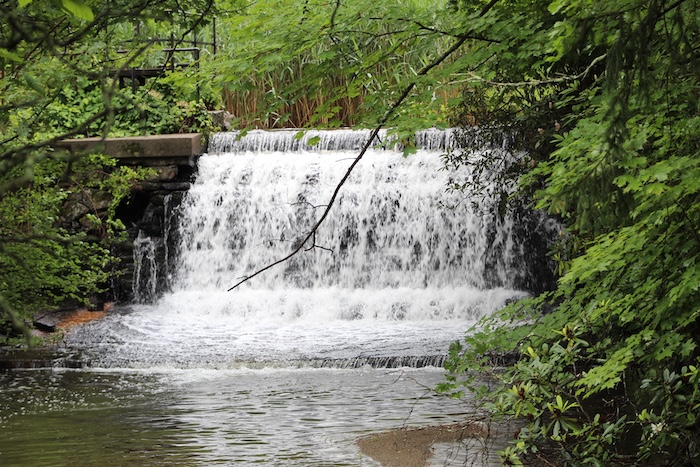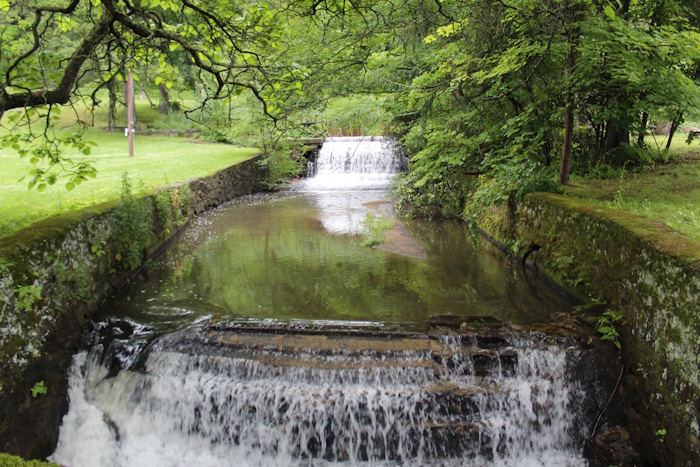Project raises concerns about flooding
A proposal by the Hoving Home in Garrison to relocate a section of Philips Brook is projected to reduce flooding along Snake Hill Road but is raising concerns that it will aggravate overflows on Avery Road and raise water levels downstream.
Sondra Shah, a water resources engineer with Inter-Fluve, based in Cambridge, Massachusetts, and Beth Greco, Hoving’s president and CEO, on June 10 introduced an application for a wetlands permit to the Philipstown Conservation Board.
Shah said that, using a $1 million state grant, the Garrison treatment program for women plans to remove a 10-foot-high dam built to create a swimming pond and shift 800 feet of the brook flowing across its property between Avery and Walter Hoving roads north.
Despite multiple repairs, the dam and the stone walls constraining the brook as it heads west to Constitution Marsh have suffered extensive damage from storms, which are occurring more often, said Shah. Water released by the dam’s failure could damage downstream properties, making the structure a risk to public safety, she said.
“There’s leakage through the dam, failure of the masonry and the reservoir is filled with invasives like knotweed and phragmites,” said Shah.

Along with the dam, some sections of the stone wall will be removed, as will one of the footbridges crossing the brook and one of its three weirs. Dirt excavated for the new channel will fill 300 feet of the brook’s existing pathway and the two remaining weirs.
Inter-Fluve has applied to the Army Corps of Engineers to release some of the sediment impounded by the dam downstream.
The new channel will be wider and shallower than the existing one. Boulders will be placed along its bed to create “step pools” — areas of deeper water whose goal is to slow the water’s flow and reduce erosion of the banks. The pools also provide “resting stops” for fish and oxygen-rich water during periods of turbulence, said Shah.
Inter-Fluve, which is also seeking a permit from the state Department of Environmental Conservation, will cover the new bank with native plants. In addition, said Shah, the reconstruction will avoid two areas of “archeological sensitivity” identified in consultation with the State Historic Preservation Office, which considers the property eligible for the National Register of Historic Places.
According to Inter-Fluve, modeling shows that the project will reduce flooding on Snake Hill Road without increasing the risk of flooding downstream of the site. “Rivers are supposed to flood, and that’s typical, but this [existing] channel with the stone walls is highly undersized,” Shah said.

While flooding along Snake Hill Road is projected to lessen, the configuration will send “additional flow” to a culvert on the Avery side of Hoving’s property, according to project documents. It will also raise the brook’s elevation downstream by 1 inch during a 10-year storm and 2 inches during a 100-year storm, according to Shah.
To address Avery Road, Hoving has received $200,000 to redesign a town-owned culvert and is planning to apply for another grant to underwrite its reconstruction, said Greco, adding that Hoving is “not going to flood our downstream neighbors. We won’t do the project. We’ll figure out something else, if we can’t.”
Andy Galler, who chairs the Conservation Board, requested that Inter-Luve create additional modeling to show how the reconfigured brook will affect residents living below Avery Road — “probably across Route 9D.”
Two Avery Road residents, Marianne Sullivan and her husband, James Hoch, also expressed concerns. In addition to more flooding on their street, Sullivan worried that releasing the sediment impounded by the dam would harm trout downstream. Hoch said that heavier flooding on Avery could damage the septic fields of its residents.
Hoch said that he felt “comforted” while reading the project documents before the meeting, but “now I’m a little worried, because I see this as moving water from one place to another place. It just so happens the place where it’s going is where people live.”


Leave the little dam alone. Everyone swam there. That’s what happens when people move here and destroy the whole lower Philiptown area. So sad.